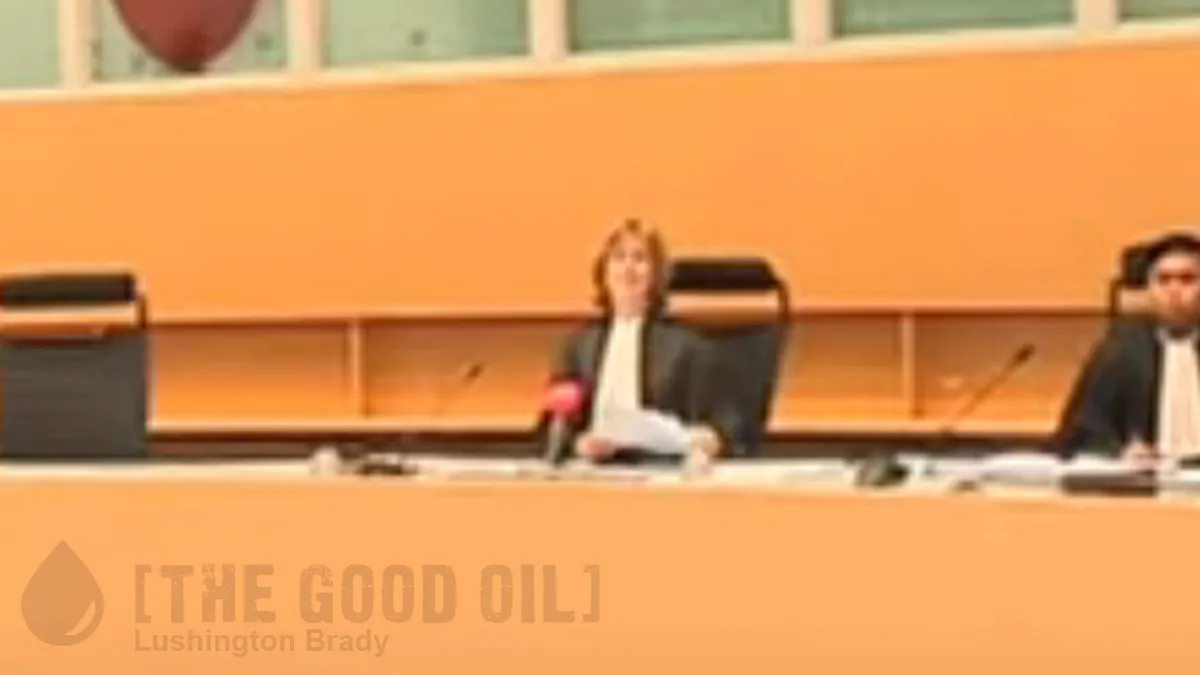Yesterday there was an article about a curious artefact in the results for one district in the recent US Presidential election. It used a statistical test called Benford’s Law. A commenter rightly pointed out a paper which called into question the utility of Benford’s Law for such purposes as evaluating election fraud. This paper was “Benford’s Law and the Detection of Election Fraud” Deckert et al, 2011.
Naturally, curiosity was piqued and the search engine was fired up. Lo and behold a response from Mr Mebane, the author of the original paper, to Deckert has been printed.
“Benford’s Law and the Detection of Election Fraud” raises doubts about whether a test based on the mean of the second significant digit of vote counts equals 4.187 is useful as a test for the occurrence of election fraud. The paper mistakenly associates such a test with Benford’s Law, considers a simulation exercise that has no apparent relevance for any actual election, applies the test to inappropriate levels of aggregation, and ignores existing analysis of recent elections in Russia. If tests based on the second significant digit of precinct-level vote counts are diagnostic of election fraud, the tests need to use expectations that take into account the features of ordinary elections, such as strategic actions. Whether the tests are useful for detecting fraud remains an open question, but approaching this question requires an approach more nuanced and tied to careful analysis of real election data than one sees in the discussed paper.”
Mebane, obviously, was not impressed with their criticism so we will leave it to the experts to argue the toss. In the meantime, it does appear that there is a 2nd-digit test that could be more telling than the first digit test from Benford’s Law.
But before we go there, let’s have a look at some more results to see how they stack up on the first digit test.

In Milwaukee, every candidate bar one follows the rule.
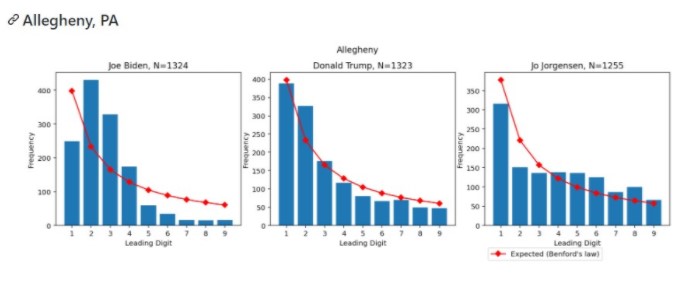
In Allegheny, every candidate bar one follows the rule.
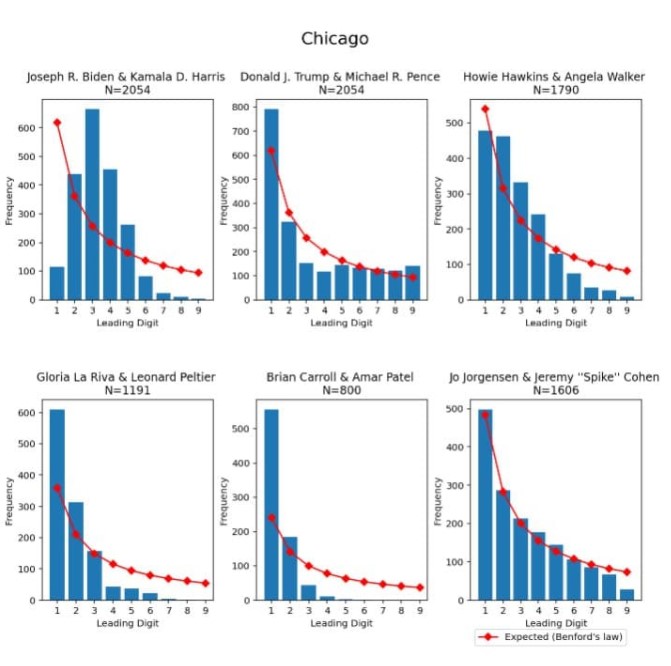
In Chicago, every candidate bar one follows the rule.
Are you seeing a pattern here?
Let’s move on to Mr Mebane’s paper on the 2nd-digit test. “Election forensics: the second-digit Benford’s law test and recent American presidential elections”. Mebane agrees that it is not perfect but is a useful tool in the investigator’s arsenal.
On the whole, this look at recent presidential election results through the lens of the 2BL test enhances the case that it is worth taking seriously as a statistical test for election fraud. The 2BL test cannot detect all kinds of fraud, and significant 2BL test results may occur even when vote counts are in no way fraudulent. […] In any case, the 2BL test on its own should not be considered proof either that election fraud has occurred or that an election was clean.
With that proviso in mind, let’s see what the 2BL (2nd-digit Benford’s Law) test showed.
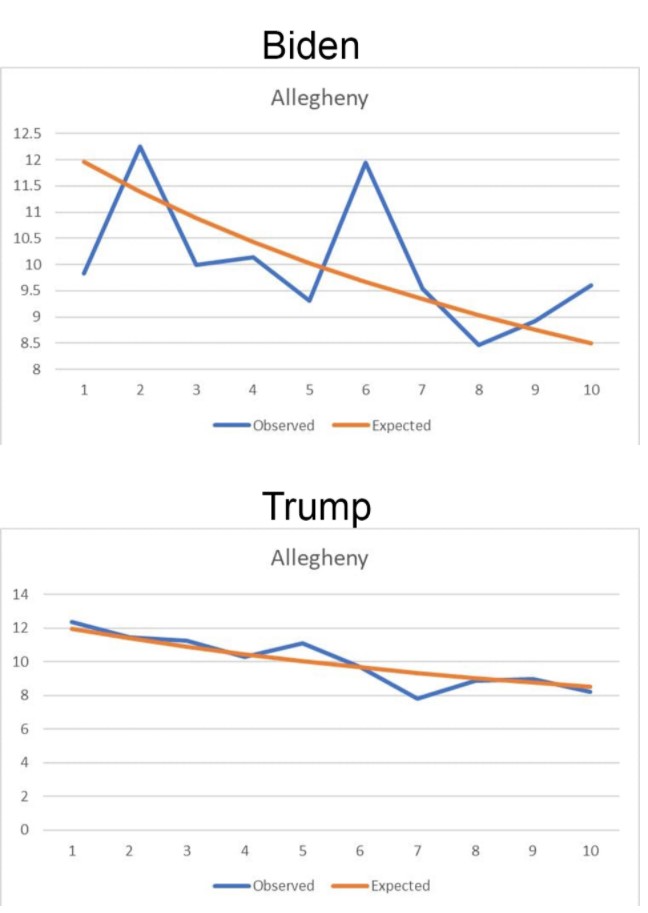
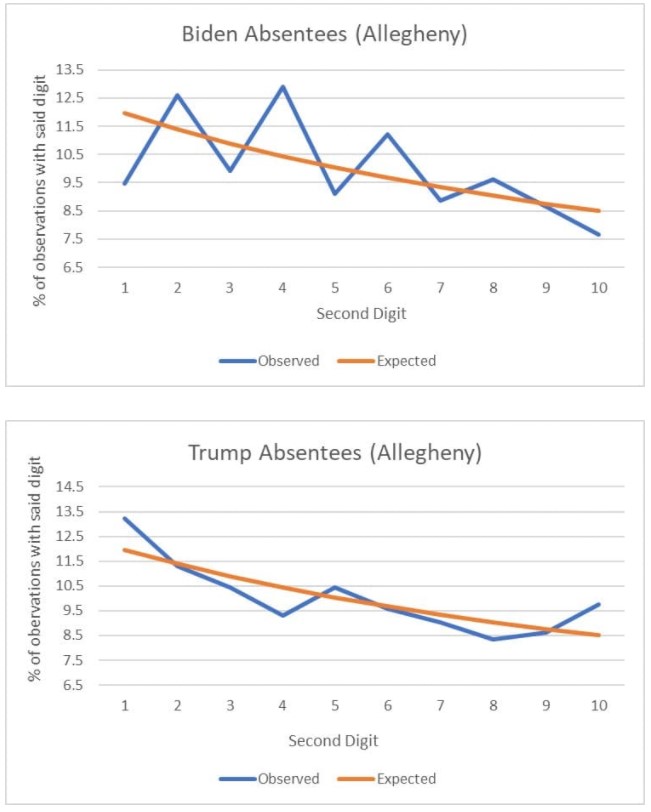
If it looks like a duck, swims like a duck, and quacks like a duck….
If you enjoyed this BFD article please share it.


